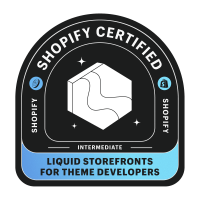A/B testing provides website owners a way to improve their website one step at a time by contrasting two website variations, A and B. Also, minor changes get made each time. The results are obtained by profiling analytics, so the more appealing version continues to be used.
A/B testing gauges the success of two different variations of a website. For example, when a new layout is being produced, you can learn whether users favor the latest web design over the old version. Both layout versions are put on the Internet and examined which version performs better.
Why should you consider A/B testing? #
If B2B companies today are dissatisfied with all the unqualified leads they obtain each month, e-commerce shops, on the other hand, are battling with a high cart abandonment rate. These core conversion metrics are affected by some typical troubles like leaks in the conversion funnel, drop-offs on the payment web page, etc. Let’s see why you should do A/B testing for best marketing results:
- Solve customer pain points
- Get better ROI from existing traffic
- Lower bounce rate
- Make low-risk modifications
- Achieve significant improvements
- Redesign website to increase future business profits
A/B testing of boosted features #
If the customer flow or navigation have been updated or new features such as filters, search feature, acquisition consultant are being presented, A/B testing can be used to examine them. Functional mistakes can also be spotted and get fixed. Improved e-commerce features will also improve user experience, which has become the primary differentiator on the market, even more important than price cuts and discounts.
Improving the conversion rate of landing pages for websites #
Suppose a website administrator is unsure whether a landing page drives its maximum conversion potential. In that case, they can place another landing page online, which is constructed in different ways, and discover which one generates a greater conversion rate.
A/B testing is just one of the parts of the overarching Conversion Rate Optimization (CRO) procedure, using which you can collect qualitative and quantitative customer data. You can further use this accumulated data to comprehend user habits, interaction rate, pain points, and even contentment with internet website features, including brand-new attributes, spruced-up web page sections, etc. If the company is not A/B screening its e-commerce store, it may risk profit loss.
Social proof #
Social proof leans on referrals and reviews from professionals of the particular fields, from celebrities and clients themselves, or can come as testimonials, media states, honors and badges, certifications, and so forth.
The existence of this evidence validates the reputation of an e-commerce website and its products. A/B testing can help online businesses determine whether adding social evidence is a good idea or not: what kind of social evidence a company should add and how much it should include. e-commerce business can evaluate various kinds of social proofs, their layouts, as well as placements to recognize which works best.
Where should you use A/B testing in e-commerce? #
The test suggestions need to come from the organization’s own data since every e-commerce company is one-of-a-kind and can differ quite a bit from the other similar companies. There are a variety of components that can be A/B tested, but the eCommerce business should focus on the ones identified to have the greatest impact on the online purchasing problems.
Free shipping #
Before considering free delivery policy, the company needs to take A/B testing to contrast their product sales performance with and without free shipping. Delivery expenses do account for high cart abandonment rates, making this a possible improvement area where e-commerce store owners aim to distinguish themselves from the competitors.
Cart abandonment rate #
Numerous e-commerce platforms have gotten rid of shipping prices for products because they have tried out and established that free shipping leads to higher conversions. Call-to-action (CTA) buttons drive eCommerce conversions, yet aspects like the perfect button color, dimension, and positioning are best figured out by A/B testing. Make sure to also test the wording, such as “Buy Now,” “Get going,” “Free Test,” “Join Free for a Month,” and so on.
“Buy Now” has a sense of seriousness, which can prompt customers to take even more immediate action. Results show that “Submit” can convert better than “Apply,” depending on the context since the former is extra inviting and more dependable than the last, which implies that it could get rejected. Also, do A/B testing with 2 CTA buttons, one at the top right-hand side of the page and the other at the bottom-left. Your CTA shades need likewise to attract attention; they should be aesthetically appealing and noticeable, blended well with your website shades. You can run a test to establish which button shade is better. When doing A/B testing for positioning, consider the above-the-fold, center, right, and left areas of the website to identify which regions produce the most effective perception and the highest conversions.
Product page #
You should utilize high-quality images for your product web pages to appeal to your target audience and make the choice easier for them to take the necessary action and buy your product. Check the location and product architecture of your homepage and product pages to establish the type of products and layouts that customers prefer. As an example, ebay.com’s homepage features colorful images of one of the most popular categories as well as daily deals. At the same time, the products web page has more thorough classifications, where website visitors can view item summaries and finish their purchase.
A/B testing & SEO #
Google allows and urges A/B testing and has specified that doing an A/B or multivariate testing poses no integral threat to your site’s search ranking. Nevertheless, it is feasible to endanger your search ranking by abusing an A/B testing device for objectives such as cloaking. Google has articulated some ideal methods to ensure that this doesn’t happen:
- No cloaking: Cloaking is the practice of revealing an online search engine different material than a regular website user would see. Cloaking can cause your website to be demoted and even eliminated from the search results page. Do not abuse site visitor division to present different content to Googlebot based upon user-agent or IP address to disguise cloaking.
- Use rel=”canonical”: If you run A/B tests with several links, you ought to utilize the rel=”canonical” attribute to direct the variants back to the initial variation of the page. Doing so will help Googlebot from getting perplexed by several versions of the very same page.
- Usage 302 redirects instead of 301s: If you run an examination that reroutes the original URL to a variant URL, utilize a 302 (short-term) redirect versus a 301 (permanent) redirect. This tells online search engines such as Google that the redirect is short-term and that they should keep the original link indexed instead of the test URL.
- Run experiments as short as you can: Operating tests for longer than needed, specifically, if you are serving one variant of your page to a significant percentage of individuals, can be viewed as an effort to trick the online search engine. Google recommends upgrading the e-commerce website and removing all test variations as quickly as a test wraps up to avoid running examinations unnecessarily long and getting penalized.
Do you want to learn more about e-commerce? Continue reading about → Customer journey in e-commerce.

